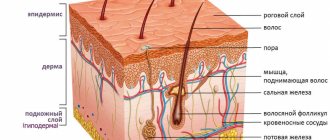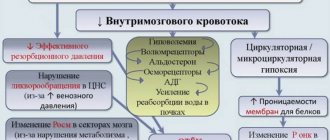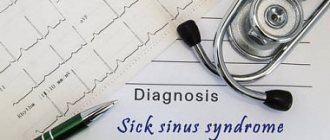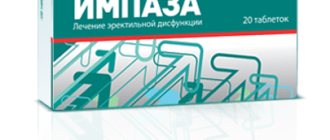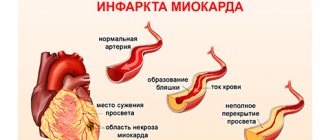Development of the disease
Every human movement is the work of different muscle groups, depending on the correct relationship of 3 elements. This:
1 - structures and connections of the cerebellum (the main organ of movement coordination);
2 - receptors that react to the current state of the joint capsule, tendons, muscles and their conductors;
3 - vestibular apparatus, which evaluates incoming impulses and body position.
If any failure occurs in these elements, disease occurs. The type of ataxia depends on what exactly was affected. Accordingly, there are types of ataxia:
sensitive ataxia - the susceptibility of deep muscle conductors is impaired;
vestibular ataxia - damage occurs in the system responsible for balance;
Cerebellar ataxia is a disruption of the functioning of this part of the brain;
frontal or cortical ataxia - dysfunction of the cortex of the frontal or temporo-occipital region.
Types of diseases transmitted by inheritance are separated into a separate group. These are: Friedreich's familial ataxia, Pierre-Marie's cerebellar ataxia, ataxia-telangiectasia (Louis-Bar syndrome). Spinocerebellar ataxia is a separate hereditary disease and today about twenty of its forms are known.
Drug therapy
If the pathology was caused by an infectious-inflammatory process, then the doctor prescribes antiviral or antibacterial therapy. Vascular disorders that cause cerebellar ataxia are treated by stopping cerebral bleeding or normalizing blood circulation. For this, the patient is prescribed the following groups of drugs: thrombolytics, angioprotectors, antiplatelet agents, anticoagulants, vasodilators.
If cerebellar ataxia has a hereditary etiology, it is impossible to completely get rid of it. Basically, doctors resort to metabolic therapy, which involves prescribing drugs such as cerebrolysin, vitamins B12, B6 and B1, ATP, ginkgo biloba preparations, mildronate, piracetam. To increase the tone of skeletal muscles and improve metabolism in them, massage is recommended for patients.
Causes and signs of ataxia
The disease can manifest itself as a result of mechanical damage to the skull or brain, hydrocephalus, cerebral palsy, congenital anomalies of brain development or infectious diseases, circulatory disorders, the presence of tumors and abscesses, and genetic predisposition.
The causes of sensitive ataxia are usually various vascular pathologies, tumors, lesions of the posterior nerves and brain stems, peripheral nodes, and the parietal lobe of the brain. In patients, the correct sensations of the surface are disturbed; for example, hard asphalt may seem like a carpet. Therefore, it is important for them to control their vision over their movements; they constantly look at their feet. When walking, bend your knees strongly, stepping loudly.
Cerebellar ataxia (the most common) occurs when the cerebellum is damaged, which can be caused by multiple sclerosis, genetics, encephalitis, tumors, infections, toxic substances, inflammatory processes, hypothyroidism, deficiency of vitamins E and group B. The symptoms of this ataxia are expressed as follows: the patient staggers in the process of walking, he places his legs wide apart, makes sweeping movements, it is difficult for him to coordinate actions both by opening and closing his eyes, speaks slowly, writes in uneven letters, and has decreased muscle tone.
The causes of vestibular ataxia usually lie in damage to this organ of balance, which occurs as a result of the appearance of brain tumors, Meniere's syndrome, encephalitis and other diseases. Typical clinical picture: dizziness, nausea, aggravated by head movements, vomiting.
Frontal ataxia in most cases is caused by abscesses, poor circulation in the brain, and the presence of malignant neoplasms. Such patients are characterized by unsteady walking, may fall over when turning, their sense of smell is impaired, changes in the psyche are observed, and the grasping reflex does not work.
Causes of cerebellar ataxia
In neurology, a classification of cerebellar ataxia is used, based on the criteria for the course of the disease. It distinguishes three main types of ataxia: acute onset, subacute onset and chronic. Each of these types can be caused by different diseases.
Ataxia with acute onset (develops suddenly after exposure to provoking factors on the body):
- ischemic stroke provoked by atherosclerotic occlusion or embolism of the cerebral arteries that feed the cerebellar tissue (considered one of the most common causes of pathology);
- hemorrhagic stroke;
- cerebellar injury resulting from intracerebral hematoma or traumatic brain injury;
- multiple sclerosis;
- Guillain-Barre syndrome;
- encephalitis and post-infectious cerebellitis;
- intoxication of the body (lithium, barbiturates, diphenine);
- hyperthermia;
- metabolic disorders;
- obstructive hydrocephalus.
Ataxia with subacute onset (develops over one or more weeks):
- tumors, various types of abscesses and other space-occupying processes in the cerebellum (astrocytoma, medulloblastoma, hemangioblastoma, ependymoma);
- normal pressure hydrocephalus caused by subarachnoid hemorrhage after brain surgery or meningitis;
- endocrine disorders (hyperparathyroidism, hypothyroidism);
- vitamin deficiency;
- overdose of anticonvulsants;
- toxic and metabolic disorders associated with absorption and nutritional disorders;
- malignant tumor diseases (lung cancer, ovarian cancer);
- paraneoplastic cerebellar degeneration.
Chronically progressive ataxia (develops over a couple of months or years):
- spinocerebellar ataxia (Friedreich's ataxia, "Nefriedreich's" ataxia);
- cortical cerebellar ataxias (Cortical cerebellar atrophy of Holmes, Late cerebellar atrophy of Marie-Foy-Alaguanine);
- late-onset cerebellar ataxias (OPCA, Machado-Joseph disease, cerebellar dysgenesis).
Symptoms of inherited ataxia
Friedreich's ataxia is the most common hereditary ataxia and is expressed by increasing manifestations of degeneration of the posterior and lateral trunks of the spinal systems, as well as the posterior spinocerebellar tract. Patients walk unsteadily and are carried to the sides. Later, facial and speech changes become noticeable, hearing deteriorates, and tendon reflexes decrease or disappear. If the disease is severe, the functioning of the heart is disrupted, the skeleton and legs are bent, and joint dislocations become more frequent.
Manifestations of Pierre-Marie ataxia are similar to those of cerebellar ataxia. It is usually diagnosed in people around 35 years of age and begins with gait disturbances. Over time, changes appear in speech and facial expressions, hand movements, muscle strength in the legs decreases, and there may be involuntary shudders. Even later, vision deteriorates, intelligence becomes weaker, nervous disorders and depression appear.
Ataxia telangiectasia is usually diagnosed at an early age and develops quickly. At about the age of 10 years, the child already has difficulty walking and signs of mental retardation appear. Immunity also malfunctions - children are much more likely to suffer from acute respiratory viral infections, acute respiratory infections, bronchitis and pneumonia.
Recommendations for the treatment of cerebellar motor dysfunction and ataxia
The American Academy of Neurology (AAN) guidelines provide a comprehensive systematic review on the treatment of cerebellar motor dysfunction and ataxia.
This review presents pharmacological therapies for patients with cerebellar motor dysfunction based on safety and efficacy considerations.
Medicines with proven effectiveness
| Moderate level of evidence | Administration of 4-amnipyridine 15 mg daily may reduce the frequency of ataxia attacks over a 3-month period in patients with episodic ataxia type 2 (1 class I study). |
| Riluzole 100 mg daily may be an effective short-term treatment for patients with ataxia of various etiologies; measured using the ICARS (Cooperative Ataxia Rating Scale) after 8 weeks (1 class I study). In patients with spinocerebellar ataxia (SCA) and Friedreich's ataxia (FA), riluzole 100 mg daily may reduce ataxia; measured using the Assessment and Rating of Ataxia (SARA) scale at 12 months (1 study, Cash I, analyzed data from a combined cohort of patients with SCA and FA, subgroup analysis not provided). Liver enzymes should also be monitored in patients receiving riluzole. | |
| Weak level of evidence | Valproic acid 1200 mg daily may increase SARA total score at 12 weeks in patients with spinocerebellar ataxia type 3 (SCA3) (1 class II study). The use of thyrotropin-releasing hormone in patients with “spinocerebellar degeneration” may improve some symptoms of ataxia over a period of 10–14 days (1 class II study). The clinical significance of these changes is unclear. |
Medicines with proven negative effects
| Moderate level of evidence | In ambulatory patients with SCA, 3 lithium does not appear to improve ataxia after 48 weeks; measured by the NESSCA (the Neurological Examination Score for Spinocerebellar Ataxia) and the SARA total score, and although minimal clinically important differences were not established on these scales, small changes cannot be excluded (1 study class I). |
| Weak level of evidence | Diferiprone 40 mg/kg per day may worsen attack symptoms in patients with FA when taken for 6 months (1 class II study). |
Medicines that have shown conflicting results
| Insufficient data | Insufficient data to support or refute change in ataxia with idebenone treatment of AF (1 class I study showed benefit at intermediate and high doses; 1 class I study provided insufficient evidence to support or refute the effect; 1 RCT with unpublished results of unknown AAN class (American Academy of Neurology) the drug did not show statistically significant changes when compared with placebo). |
| There is insufficient evidence to support or refute the benefit of buspirone for the treatment of cerebellar motor dysfunction (class III inconsistent studies). | |
| There is insufficient evidence to support or refute the benefit of l-tryptophan for the treatment of cerebellar motor dysfunction (inconsistent class III studies with limited available data). | |
| There is insufficient evidence to support or refute the benefit of choline for the treatment of ataxia (inconsistent class III studies with limited available data). |
Medicines with insufficient evidence
| Insufficient data | There is insufficient evidence to support or refute the effectiveness of varenicline (mean dose 1.67 mg/day) in the treatment of ataxia in patients with SCA 3 over 4 weeks, as measured by SARA total score (1 class II study with insufficient precision in measuring primary endpoint of the study). |
| There is insufficient evidence to support or refute the benefit of ondansetron for the treatment of patients with ataxia (1 class II study with insufficient power, 1 class III study with insufficient power, and 1 class III study of cerebellar tremor with only 2 patients with cerebellar degeneration evaluated) . | |
| There is insufficient evidence to support or refute the benefit of dolasetron mesylate for the treatment of patients with cerebellar syndrome secondary to multiple sclerosis (MS) (1 class III study). | |
| There is insufficient evidence to support or refute the benefit of trimethoprim-sulfamethoxazole for the treatment of patients with SCA 3 (1 class III study). | |
| There is insufficient evidence to support or refute the benefit of zinc for the treatment of patients with SCA type 2 (1 class II study with limited power). | |
| There is insufficient evidence to support or refute the benefit of l-acetylcarnitine in the treatment of patients with degenerative cerebellar ataxia (1 class III study). | |
| There is insufficient evidence to support or refute the benefit of physostigmine in the treatment of patients with cerebellar ataxia (2 class III studies at different time periods and with limited description of the results). | |
| There is insufficient evidence to support or refute the benefit of amantadine in the treatment of patients with cerebellar ataxia (1 class III study). | |
| There is insufficient evidence to support or refute the benefit of branched-chain amino acids in the treatment of patients with cerebellar ataxia (1 class III study). | |
| There is insufficient evidence to support or refute the benefit of betamethasone in patients with ataxia telangiectasia (1 class III study). |
Do surgery or other interventional therapies (eg, physical training) improve motor symptoms with acceptable safety and tolerability compared with no (or alternative) treatment in patients with cerebellar motor dysfunction?
| Weak level of evidence | The use of a pneumatic splint in conjunction with neuromuscular rehabilitation may have no additional benefit compared with the use of neuromuscular rehabilitation alone in patients with MS-associated ataxia (1 class II study). |
| Moderate level of evidence | Four weeks of inpatient rehabilitation with physical and occupational therapy in patients with isolated degenerative ataxia appears to reduce ataxia and improve functional ability at 4 weeks compared with baseline (1 class I study). |
| Insufficient data | There is insufficient evidence to support or refute the benefit of whole body stochastic vibration therapy in patients with SCA (1 class III study). |
Does transcranial magnetic stimulation (TCMS) or transcranial direct current stimulation (tDCS) improve motor symptoms with acceptable safety and tolerability compared with no (or alternative) treatment in patients with cerebellar motor deficits?
| Weak level of evidence | Cerebellar TCMS may improve cerebellar motor function after 21 days in patients with spinocerebellar degeneration and olivopontocerebellar atrophy (1 class II study). |
| Insufficient data | There is insufficient evidence to support or refute the use of a single session of anodal cerebellar transcranial direct current stimulation (tDCS) for the treatment of ataxia (1 class III study). |
This extensive systematic review was approved by the Children's Ataxia Project and the National Ataxia Foundation.
Link to original text https://www.aan.com/Guidelines/home/GetGuidelineContent/893
How to Diagnose Ataxia
To correctly diagnose a patient, different methods are used. Among them: MRI and electroencephalography of the brain, electromyography, magnetic resonance angiography. To establish a diagnosis of hereditary types of ataxia, DNA diagnostics is used, which makes it possible to determine the possibility of inheritance of pathogens of this disease in the family. Laboratory diagnostics are also used to check whether there are disorders of amino acid metabolism, which is one of the indicators. Examination by medical specialists: neurologist, psychiatrist, ophthalmologist is also of great importance.
General information
The cerebellum (in Latin: cerebellum) in humans is located inside the skull, in the area of the back of the head. Typically, the cerebellum has an average volume of 162 cubic meters. cm, and its weight varies between 135-169 g. The cerebellum has two hemispheres, between which is located its oldest part - the vermis . In addition, with the help of three pairs of legs, it is connected to the medulla oblongata, the pons and the midbrain. It consists of white and gray matter, from the latter the cerebellar cortex and paired nuclei in its body are formed. The worm is responsible for balance and stability of the body, and the hemispheres are responsible for the accuracy of movements. To maintain body balance, the cerebellum receives information from proprioceptors of various parts of the body and from other organizations that are involved in controlling the position of the human body ( inferior olives , vestibular nuclei ).
nerve impulses enter the cerebellum . They run from the spinal cord and from the part of the cerebral cortex that is responsible for movement. Having passed through a complex system of contacts, a stream of nerve impulses enters the cerebellum, which, in turn, analyzes it and produces an “answer” that already enters the human consciousness, i.e. into the cerebral cortex and spinal cord. Thanks to the coordinated work of all organs, the work of the muscles of the body becomes clear and beautiful. Lesions of the cerebellum and its vermis manifest themselves in static disturbances , i.e. a person cannot consistently maintain a stable position of the body’s center of gravity, as well as balance.
The term “ ataxia ” in relation to diseases of the nervous system has been used since the time of Hippocrates, and then it meant “disorder” and “confusion”; today, ataxia is understood as a lack of coordination of movements . Ataxia manifests itself in a disorder of gait and movements of the limbs, which manifests itself in trembling when performing actions, missing the mark, as well as imbalance in a standing and sitting position.
Ataxias are cerebellar , sensory , vestibular and frontal . When the cerebellum and its pathways are damaged, cerebellar ataxia occurs. This disease manifests itself with symptoms of ataxia when standing and walking. The gait of a patient with cerebellar ataxia resembles the gait of a drunk; he walks uncertainly, spreads his legs wide, and is thrown from side to side, usually towards the location of the pathological focus.
Tremor in the limbs is intentional; a person cannot quickly change body position. Asynergy can also often be observed , that is, inconsistency of movements, for example, when the body is tilted back, the legs do not bend at the knee joints, so a fall is possible. Very often, with cerebellar ataxia, “chopped” speech is observed, changes in handwriting may be observed, and sometimes muscle hypotonia .
If the lesion spreads to the cerebellar hemispheres, then ataxia of the limbs may develop on the side in which the hemisphere is located; if the vermis is affected, then ataxia of the trunk develops.
If a patient with cerebellar ataxia is placed in the Romberg position (that is, stand with legs tightly together, arms pressed to the body and head raised), then this position is unstable, the person’s body can sway, sometimes pulling on one side, even to the point of falling. If a worm is affected, then the patient falls backward, and if one of the hemispheres is affected, then towards the pathological focus.
In a normal state, if there is a threat of falling to the side, the leg located on the side of the fall moves in the same direction, and the other one comes off the floor, that is, a “jump reaction” occurs. Cerebellar ataxia disrupts these reactions; if he is pushed slightly to the side, he easily falls ( pushing symptom ).
At a young age, the human nervous system has a fairly high potential for neuroplasticity , i.e. the property of the nervous system to quickly restructure under the influence of external or internal changes. For the development of neuroplasticity, a series of repetitions of the same impact is necessary, due to which biochemical and electrophysiological changes occur in the central nervous system. As a result of this, new contacts are formed between the cells of the central nervous system, or old contacts become active. And with ataxia, due to damage to nerve tissue, the skills of subtle and harmonious movements cannot be formed.
It should be noted that ataxia occurs in approximately 1 to 23 people per 100 thousand (prevalence depends on the region). The actual development of ataxia is usually genetically determined, and the symptoms of congenital cerebellar ataxia appear in childhood.
According to modern classifications, cerebellar ataxias are:
- Congenital cerebellar ataxias (non-progressive when the hemispheres or the cerebellar vermis are underdeveloped or absent).
- Autosomal recessive ataxias that occur at an early age ( Friedreich's ataxia ). Friedreich's ataxia was first described in 1861, and symptoms usually appear in children or young adults under 25 years of age. The disease also manifests itself in symptoms of ataxia, static disorders, unsteady gait, and decreased muscle tone. The resulting sensitivity disorder leads to a decrease in tendon reflexes. Friedreich's ataxia is characterized by abnormal development of the skeleton, the appearance of "Friedreich's foot", i.e. shortened foot, high arch. The disease itself progresses quite slowly, but leads to disability of patients and bedriddenness.
- Recessive ataxias associated with the X chromosome ( X-chromosomal ataxia ). This type of ataxia is very rare, mainly in males in the form of progressive cerebellar insufficiency.
- Betten disease , inherited in an autosomal recessive manner, is a congenital disorder. It is characterized by congenital cerebellar ataxia, which is transmitted in the first years of life in the form of disturbances in statics, coordination of movements and gaze. Such children begin to hold their heads by the age of 2-3 years, and walk and talk even later. With age, the patient adapts to his condition.
- Autosomal dominant ataxias of late age (they are also called spinocerebellar ataxias). This includes Pierre Marie disease . This type of hereditary cerebellar ataxia manifests itself at the age of 25-45 years, and affects the cells of the cerebellar cortex and nuclei, spinocerebellar tracts in the spinal cord and pontine nuclei. Its signs are ataxia and pyramidal insufficiency, intention tremor, tendon hyperreflexia, and “chopped” speech. Sometimes - strabismus , ptosis, decreased vision. The size of the cerebellum gradually decreases, and a decrease in intelligence and depressive states are very often observed. By the way, most authors consider cerebellar ataxia of Pierre Marie a syndrome, which includes olivopontocerebellar (Dejerine-Thomas) and olivocerebellar atrophy (Holmes type), cerebellar atrophy of Marie-Foy-Alaguanin, as well as olivorubrocerebellar atrophy of Lhermitte.
Treatment and prognosis
If you suspect a disease, you need to contact a neurologist, and if the diagnosis is confirmed, begin active treatment. Its goal will be to eliminate the cause of the disease, for example, reducing pressure in the posterior cranial fossa, removing an abscess or tumor, eliminating hemorrhage. If the cause is eliminated, body functions are usually restored. In other cases, significant improvements in quality of life are possible.
If ataxia is diagnosed, only a doctor should prescribe medications. In addition, he can recommend a certain set of exercises that strengthens muscles and improves coordination of movements, and recommend general strengthening agents (Cerebrolysin, anticholinesterase drugs, ATP, B vitamins).
Conservative therapy
In addition to drug therapy and surgical operations, complex therapy of the disease involves the appointment of other conservative methods. According to indications, patients may be prescribed speech therapy, occupational therapy, physiotherapy, and physical therapy. The latter involves both performing sports exercises and repeatedly repeating various household skills to improve coordination of movements: turning pages, pouring liquids, buttoning clothes.
Danger of ataxia and risk groups
Since this disease is associated with impaired coordination, and also contributes to respiratory and heart failure, weakened immunity, its development can lead to disability, and in advanced cases, death. But following medical recommendations often guarantees not only a significant improvement in physical condition, but also recovery. Based on statistics, the likelihood of contracting this disease is most often in people with a history of genetic predisposition, encephalitis, epilepsy, circulatory and brain disorders.
Prognosis and prevention
The prognosis for the patient depends solely on the cause that triggered the onset of the disease. Acute and subacute ataxia caused by intoxication of the body, vascular disorders, and inflammatory processes can completely regress or partially persist. In this case, the prognosis for the patient will be as favorable as possible if the provoking factor can be eliminated in time: infection, toxic effects, vascular occlusion.
The chronic form of ataxia is characterized by a gradual increase in symptoms, which ultimately leads to disability of the patient. The greatest danger to the patient's life is cerebellar ataxia caused by tumor processes. The rapid development of the disease and disruption of the functioning of many organs leads to serious complications that significantly worsen the patient’s quality of life.
Prevention of cerebellar ataxia involves preventing traumatic brain injury, infection of the body, the development of vascular disorders, timely treatment of chronic cerebral ischemia, compensation for metabolic and endocrine disorders, and mandatory genetic counseling during pregnancy planning.
Clinical signs
The symptom complex of cerebellar ataxia takes first place in the clinic. Patients are characterized by static disorder - falling backward or to the sides in the Romberg stance. A slight disturbance in gait, “shooting” pain in the legs and lower back indicate the onset of the disease. Next, tremors of the hands, head, and unconscious contractions of the muscles of the face and torso occur. With a significant decrease in muscle strength, sensitivity remains. The clinic is accompanied by a lack of coordination of movements, handwriting becomes large, uneven and sweeping. Speech becomes difficult, becomes intermittent and slow, and has a chanting character.
Classic clinical cases are not without oculomotor disorders and decreased visual function. The gradual death of the optic nerves leads to a narrowing of the visual fields. All these signs are steadily progressing. Drooping of the upper eyelid is recorded. The patient raises his eyebrows in an attempt to reduce ptosis - this gives the face a surprised look. Often the disease is expressed by strabismus, impaired binocular vision, which leads to paresis of the abducens nerve.
Mental ailments are gradually joining the listed disorders. The course of the disease is aggravated by a decrease in mental processes and memory, and a depressive neurotic state develops. In severe clinical cases, epileptic seizures occur.


